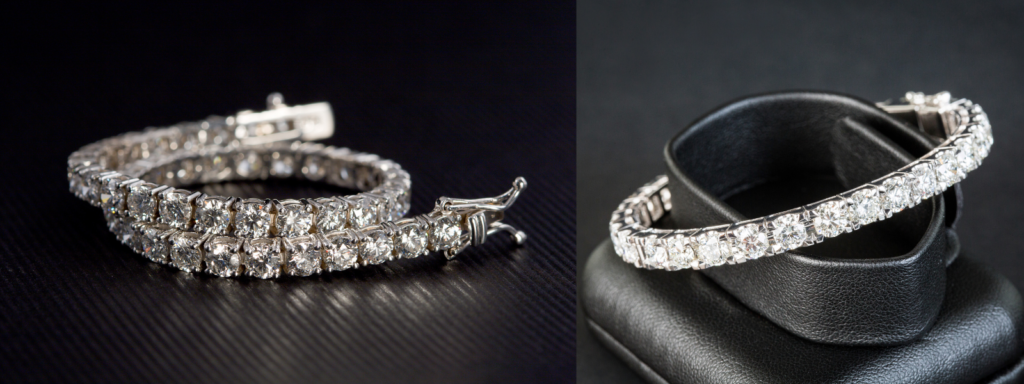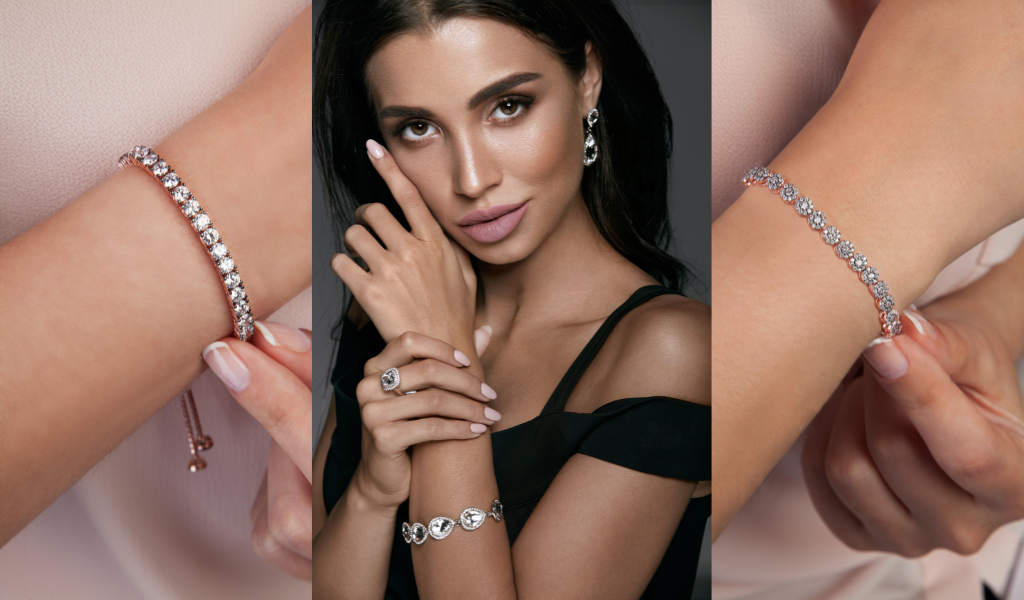A piece of jewelry is unfashionable only if you think accessories are just for decoration. In fact, every brassicle tells a story; from diamond bracelet to vintage pieces, every wrist adornment has its own meaning. Here’s a few. 1. Are you double-thumbing because you’re hanging upside down? I mean, who isn’t? The ‘triple-thumbing look’ might be in this year, but omg, shouldn’t you be shopping for Missoni instead? Get out, loser.
Diamond Bracelets: Sparkling Elegance for Every Wrist
Diamond bracelets are a classic piece of jewelry that have been used to convey class, charm, and timeless love. They are often worn on the right wrist and can signal a show of strength. A woman’s appearance of confidence is enhanced by wearing a diamond bracelet on her right wrist.
Lab-Created and Lab-Grown Diamond Bracelets: Ethical and Exquisite
Lab-grown and lab-created diamond bracelets have become popular in recent years. Charities and NGOs are now promoting their beauty and sustainability. Those good intentions can be worn on the right wrist.
Vintage Diamond Bracelets: Nostalgia and Timeless Charm
A vintage diamond bracelet is nostalgic. Worn on the left wrist, it connects the wearer to her personal history, to the history of her family, and to women of generations past. The details of its creation are understood, recounted, and recalled; the tale is told and retold. Worn on the right wrist, it expresses the emotion felt in the presence of precious antiquities, a love of history and remembrance, of things that are elegantly old, foibles and flaws and all.
White Gold and Platinum Diamond Bracelet: Luxurious Sophistication
A white gold diamond bracelet or platinum bracelet with diamonds on the right wrist. He calls this look fashionable, refined taste, a symbol of maturity, a taste of high rank, elegance, tenderness, and love.

Diamond Tennis Bracelets: Athletic Elegance and Grace
Sparkling diamond tennis bracelets are a perfect balance of sporty durability and athletic elegance; they’re the ultimate contemporary symbol of sophistication. The bracelets, which can be worn either on the left or right wrist, also symbolize a similar balance between power and femininity or give the wearer the appearance of being used either on or off the court.
Women’s Diamond Bracelet: Celebrating Feminine Power
Most importantly, women’s diamond bracelets, as they come in all shapes and forms, hail the strength of womankind. Worn on the right wrist, they signify the inner strength of the woman who wears them, which encourages her to acknowledge, celebrate, and be inspired by her very own beauty and uniqueness. As always, each bracelet carries its own meaning because women are not just one thing or play just one role.
Also Read: How Many Carats Should A Diamond Pendant Be?
And finally, in conclusion, where your bracelet lands on your wrist might reveal a bit about who you are and what you want to convey. Wearing a bracelet on your right wrist shows that you have an adventurous spirit. Diamonds, lab-grown gems, or heirlooms—each is an individual style. Next time you put on your bracelet, follow your heart. Where does your right wrist want to go?
FAQs on Diamond Tennis Bracelets
1. What does it mean when someone wears a bracelet on their right wrist?
Because cultural and personal interpretation can play a larger role, the significance of wearing a bracelet on the right wrist can also vary. The right side of the wrist is historically considered to be more social or expressive in many cultures, making the wearing of bracelets here a clear statement of confidence, strength, power, or assertiveness. It may additionally serve as a celebration of an individual’s unique identity and as a comment on personal style.
2. Are there any specific types of bracelets traditionally worn on the right wrist?
While there are no hard-and-fast rules as to what bracelet goes where on your wrist, for instance, tennis bracelets have long been associated with a feminine sense of coordination and circumspection, so perhaps when worn on the right wrist, they define a bionic bi-ped harmony, sporty, and blessed.
3. Can wearing a bracelet on the right wrist affect its symbolism?
People have different views on why a bracelet worn on the right wrist takes on a special meaning, and it probably enables a personal choice. For people of faith, there might be a stronger attachment to a whitesmith brass bangle or a pearl anklet (holder of something believed to give good luck) than others. But why? Often, there might not be a rational reason or role. It could simply be a gesture of wish fulfilment, good luck, or sheer superstition.
4. Does the material of which [the bracelet] is made alter the meaning of a bracelet [if worn] on the right wrist?
Furthermore, the bracelet’s material can be taken into account to create additional layers of symbolism by examining what he uses his right wrist to convey. To elaborate on the meaning of placing materials on the right wrist, white gold or platinum may lead to interpretations of luxuriousness, prestige, and finesse. Lab-grown diamond bracelets on the right wrist convey ethical and sustainable sentiments, reflective of someone who embodies a ‘green’ sensibility.
5. Do you or anyone you have dated have any cultural or religious significance with a bracelet worn on the right wrist?
Such customs come from the fact that they have a bad reputation in some cultures and religions. In Hinduism, for example, the right hand is the one that we use to give blessings, and the left hand is the one hand is the one that we use to do dirty things. It is the hand we use to make a promise and the one used to break the promise. There is a purity associated with the right hand that extends to wearing something on the right wrist. So, wearing a bracelet or bangle on the right wrist is auspicious, particularly for a married woman. Similarly, a Hindu person might use the right hand only to take food without putting it into their mouth.
The same purity, in Hindu thought, makes the right side auspicious and the left its opposite: the side to shield. As a result, you will see in some temples that the idol of the god sits on a platform on the right side of the temple. In certain belief systems, you find other beliefs that connect the right side not just with purity and auspiciousness but also with strength, protection, and good energy. As protective accessories, the right side has long been preferred for adornment, especially when the accessory carries symbolic meaning.






